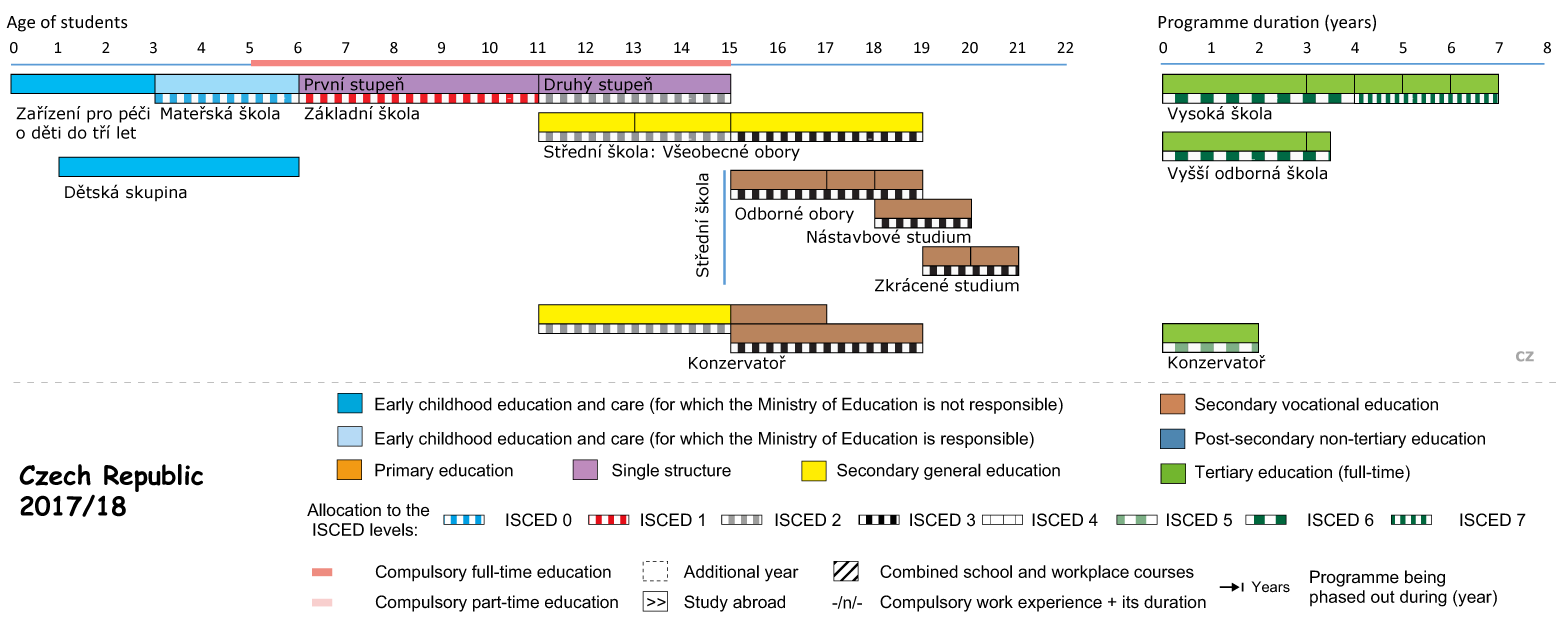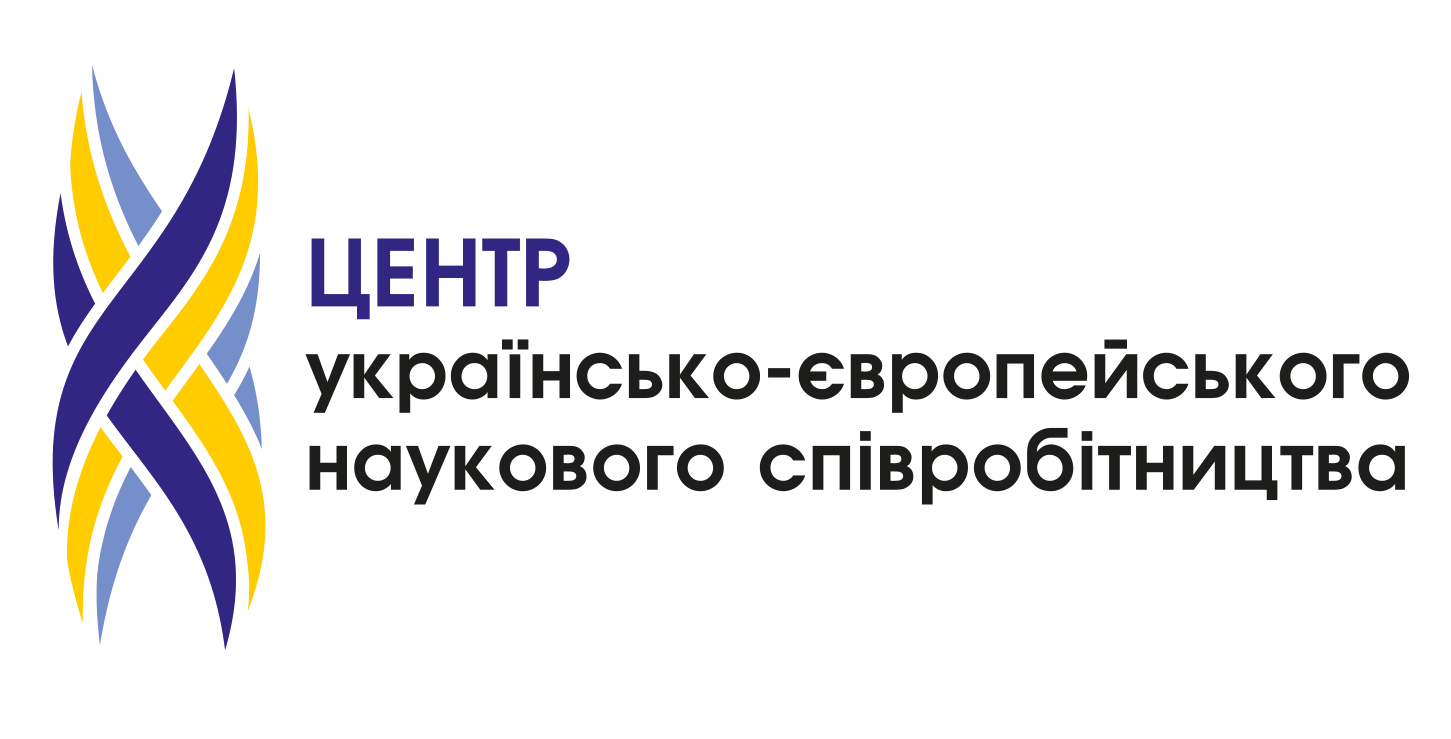
Key Features of the Education System
Schools Administered within the Public administration; Responsibilities Distributed among the Central Government, Regions and Municipalities
The Ministry of Education, Youth and Sports, as the body responsible for the state administration in the area of education:
- is responsible for the state, conception and development of the education system;
- allocates financial resources from the state budget;
- sets out the qualification requirements and working conditions of teachers;
- determines the general content of education from pre-primary to secondary level;
- approves educational programmes of tertiary professional schools.
The Regions:
- establish upper secondary schools (ISCED 3);
- establish conservatoires (ISCED 2, ISCED 3, ISCED 5);
- establish tertiary professional schools (ISCED 6).
The Munucipalities:
- establish nursery schools (ISCED 0);
- establish basic schools (ISCED 1, ISCED 2);
- ensure the compulsory schooling.
Legal Entitlement to ECEC for 3-year-olds
The Education Act requires the municipality to ensure a place in a nursery school for a child with a permanent residence in the municipality who reaches at least 3 years before the beginning of the school year (by 31 August). For children who reach 5 years of age is pre-primary education compulsory (from the beginning of the school year following the child’s 5th birthday until the commencement of the compulsory school attendance). Education in the last year of a public or state nursery school is provided free of charge.
Transfer of most of the Pupils to Upper Secondary Schools (ISCED 3) after the Compulsory Schooling
The percentage of people aged 20–24 who have successfully completed at least upper secondary education was 89% whereas the average for the EU (28) was 83% (2017).
Source: Eurostat Database
High Enrolment Rate of Students in Vocational Programmes (ISCED 3)
78.5% of pupils in upper secondary education are enrolled in the vocational stream whereas the EU average (EU 28) is 55.7% (2012).
Source: Eurostat Database
Low Rate of Early School Leavers (ISCED 3)
The rate of early school leavers (defined as the percentage of the population aged 18–24 with at most lower secondary education, who are not in further education or training) was 6.7% in 2017 whereas the EU average (EU 28) was 10.6%.
Source: Eurostat Database
Autonomy of Higher Education Institutions
Higher education institutions (ISCED 6–8) are usually independent legal entities with a high degree of autonomy. Their self-government responsibilities include among others:
- labour relations (including the amount of wages);
- management;
- preparation and realisation of study programmes accredited by the National Accreditation Bureau (Národní akreditační úřad pro vysoké školství).
Low Fees at Public Higher Education Institutions
The only fees that exist are related to admission procedures and are paid once per cycle by all students (except for students studying in a foreign language, who pay tuition fees).
Stages of the Education System
The youngest children can attend facilities for children under 3 years of age or a children’s group aimed at children from 1 year until the start of the compulsory education.
Pre-primary education is provided for children aged 3 to 6 in nursery schools. Children from 4 years of age within the catchment area of the nursery school are admitted preferentially. From September 2017, the last year of pre-primary education (i.e. from 5 years of age) is compulsory.
Compulsory school attendance starts at 6 years of age and lasts 9 years.
Primary and lower secondary education (basic education) is organised mostly within a single-structure system in nine-year basic schools, which are divided into the first and second stage. The age of pupils is usually 6 to 15 years. Also the multi-year general secondary schools and eight-year conservatoires can provide lower secondary education.
Upper secondary education (secondary education) is provided by upper secondary schools in general and vocational fields. The age of pupils is usually 15 to 18/19 years. School leavers acquire one of the three levels of education:
- secondary education with a school-leaving examination;
- secondary education with an apprenticeship certificate;
- secondary education.
The secondary education with a school-leaving examination can be attained in general as well as vocational fields and it is a prerequisite for entering tertiary education. Upper secondary schools provide also a follow-up study enabling holders of the apprenticeship certificate to acquire secondary education with a school-leaving examination, and a shortened study in which the school leavers with school-leaving examination or apprenticeship certificate gain qualification in a different field.
The conservatoire is a specific type of school providing lower and upper secondary, as well as tertiary professional education in the area of art.
Tertiary education is carried out by tertiary professional schools and higher education institutions. Tertiary professional education is usually attained in three-year programmes. Higher education is provided in the first, second and third cycle programmes (Bachelor’s, Master’s and Doctoral degree programmes), or possibly in non-structured long Master’s degree programmes.
Adult education includes general education, vocational education, interest-based education and other education.
Structure of the Education System
Resource: https://eacea.ec.europa.eu/national-policies/eurydice/content/czech-republic_en









